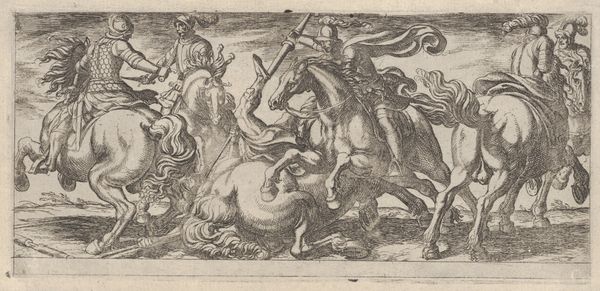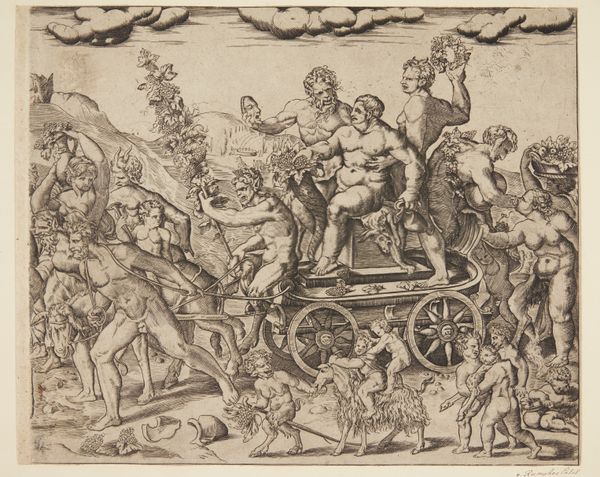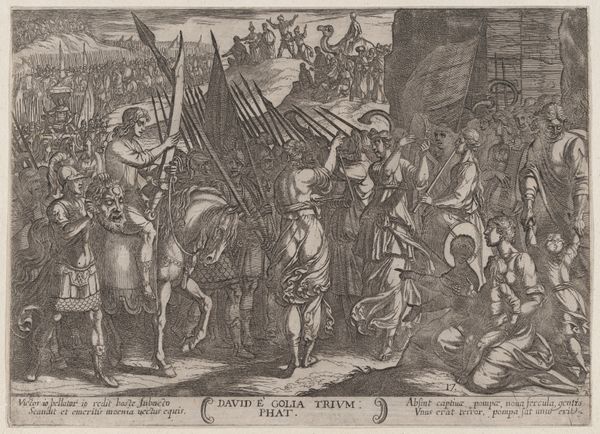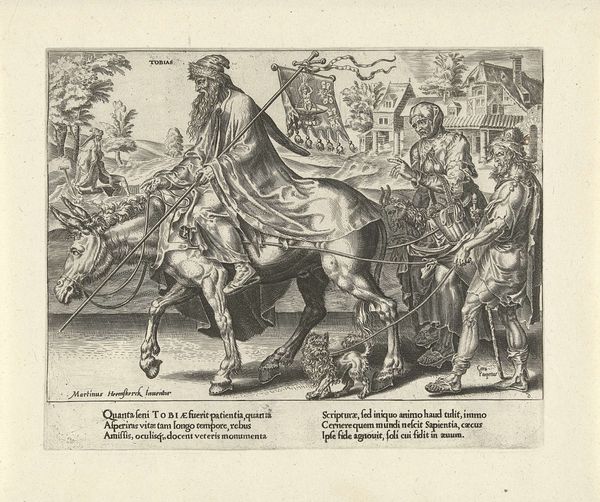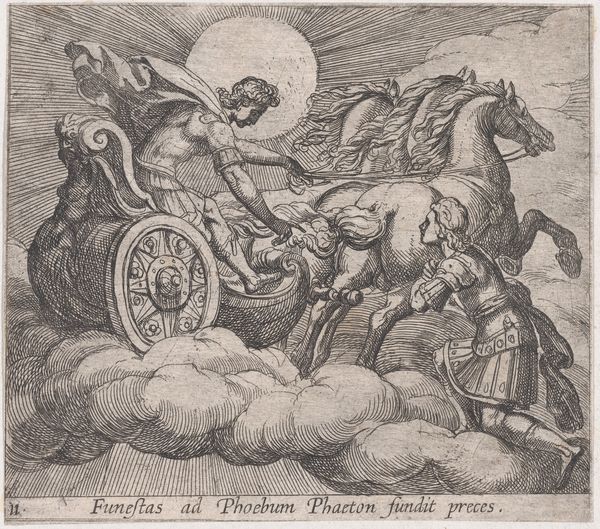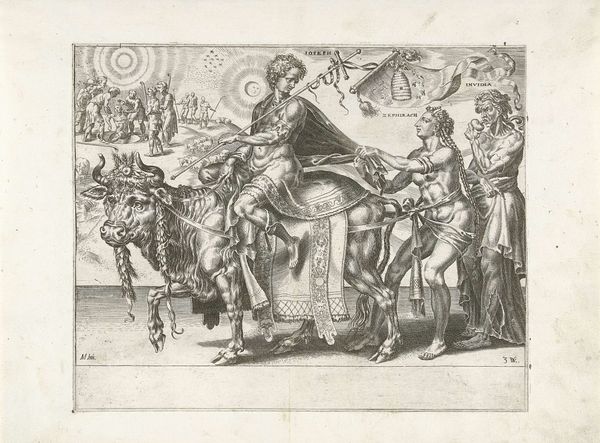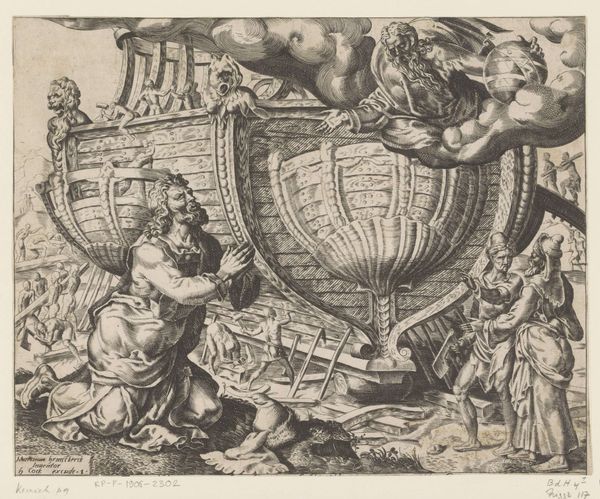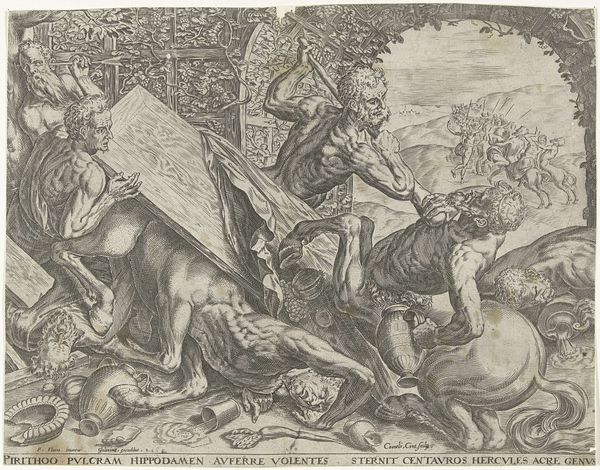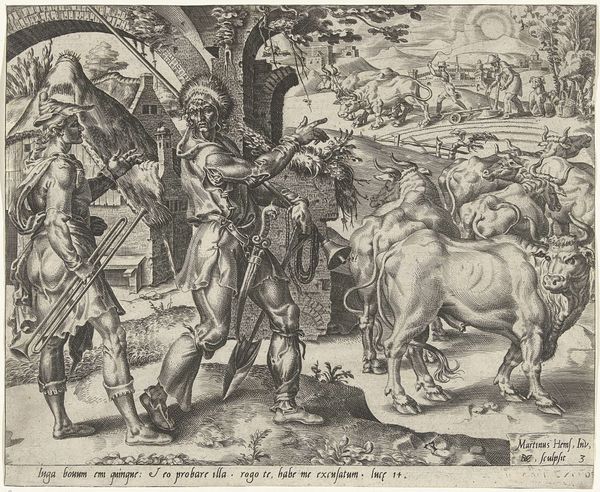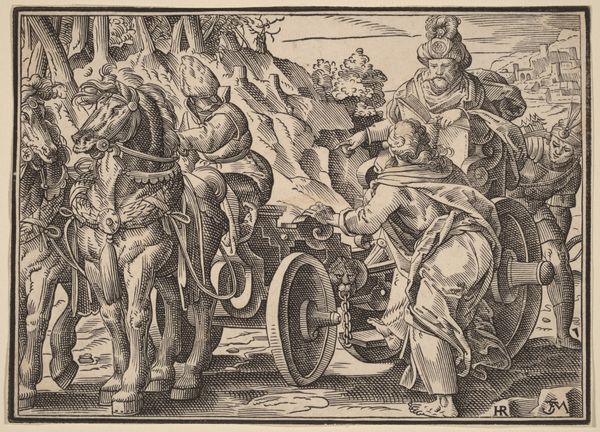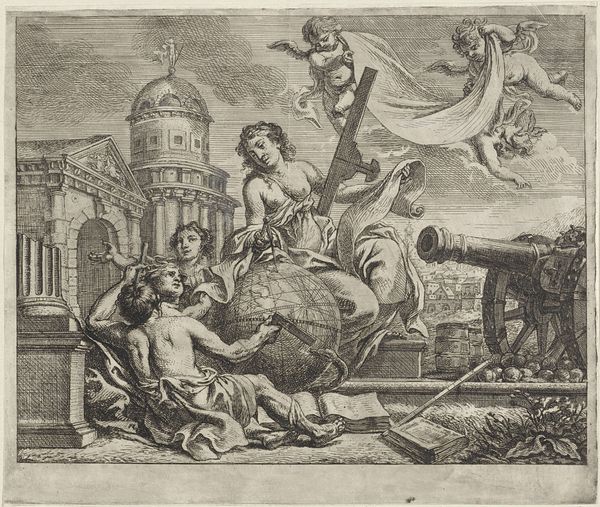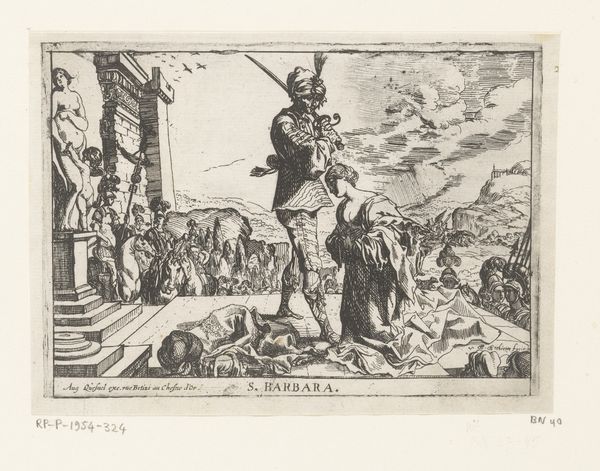
drawing, print, etching, ink, engraving
#
drawing
#
allegory
#
narrative-art
#
pen drawing
# print
#
pen illustration
#
pen sketch
#
etching
#
war
#
figuration
#
11_renaissance
#
ink
#
history-painting
#
engraving
Dimensions: height 68 mm, width 222 mm
Copyright: Rijks Museum: Open Domain
Editor: This is "Triumph with a captured king" by Etienne Delaune, made sometime between 1528 and 1583. It seems to be a pen and ink drawing or perhaps an etching. I’m struck by the chaos and movement. What historical context might be influencing this depiction of war? Curator: Indeed. The Renaissance witnessed constant shifts in power, religious upheaval, and nascent colonialism. How might Delaune's piece engage with or critique these socio-political dynamics of his time? This isn't simply about war; it’s about power structures, perhaps even anxieties about shifting identities and destabilized orders. What does a 'triumph' mean when it's built on conquest and captivity? Editor: I see. It's easy to focus on the surface spectacle of victory, but much harder to look at the consequences. Could this be a commentary on the ethics of war itself? Curator: Precisely! The opulence clashes with the brutality, doesn't it? Consider, also, the bodies pulling the chariot - what status do they occupy in society, and in whose service are they laboring? And what happens when the narratives are controlled only by the victors? Editor: It makes you wonder who isn't represented here. We see the conqueror, but what about the voices of those conquered, enslaved, or displaced? Curator: A powerful question. Delaune's artwork, viewed through this lens, isn’t just a historical artifact; it becomes a springboard for examining ongoing power imbalances and the voices consistently marginalized. We can now approach this with a critical eye, thinking about whose stories get told and whose are erased. Editor: That's really insightful. It's transformed my understanding, it encourages a much more critical examination of history and its representations in art. Thanks! Curator: My pleasure. This helps us think more about these themes as it impacts the world today.
Comments
No comments
Be the first to comment and join the conversation on the ultimate creative platform.
